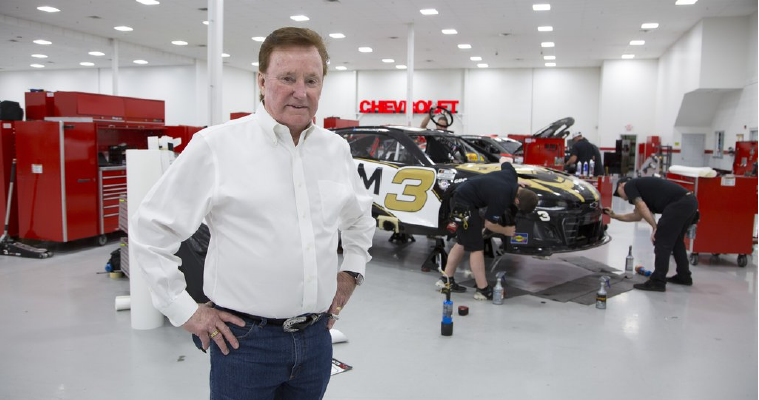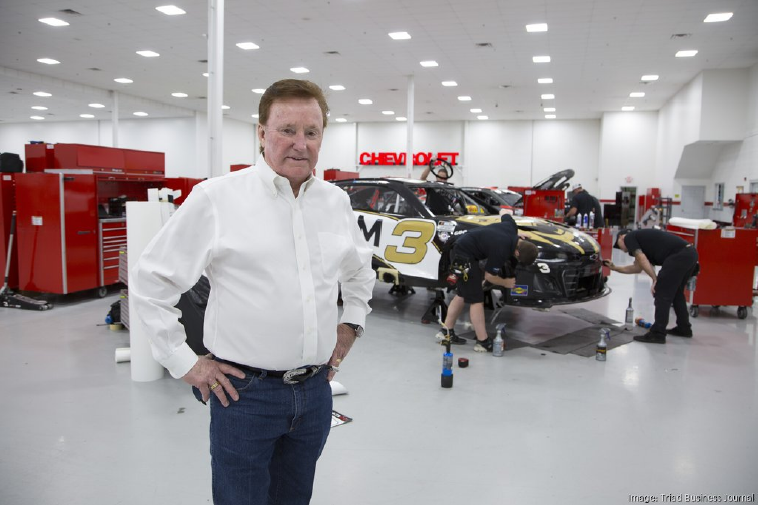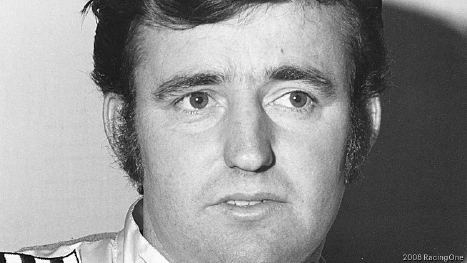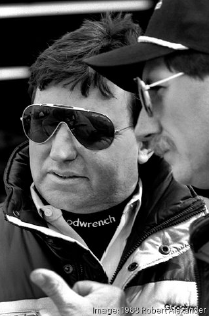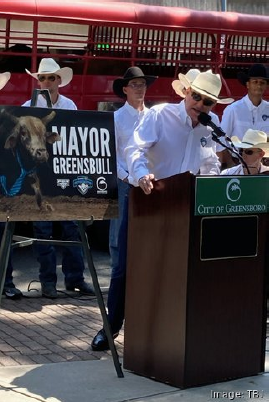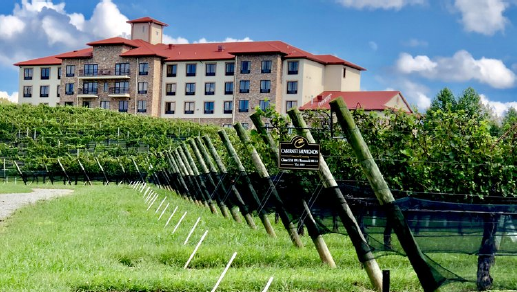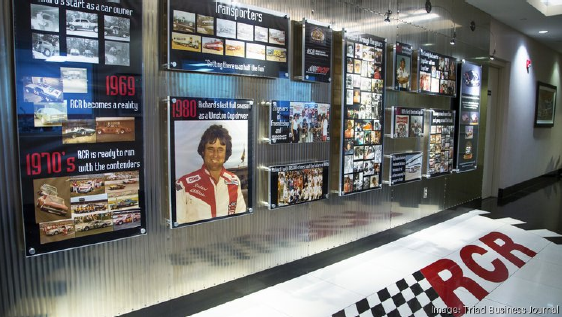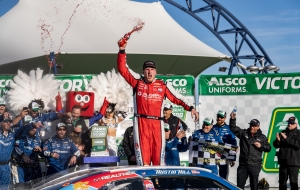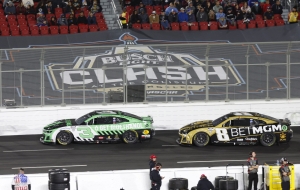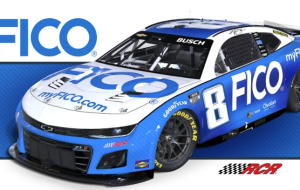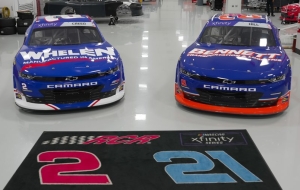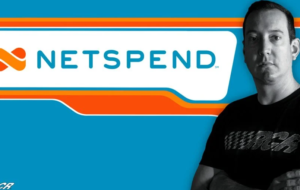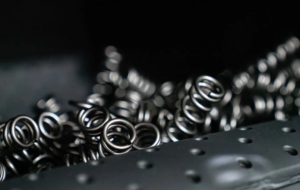*originally published in Triad Business Journal by Julie Knight and John Brasier on Nov. 3, 2023
Sometimes as he drives through his Welcome race team campus or his Lexington vineyards, racing legend Richard Childress admits he looks around and wonders how he built his Davidson County empire.
How did a kid from south Winston-Salem who began his career as an employee at Douglas Battery and drove in small, local stock car races create become one of the state’s wealthiest and most successful residents, employing 400 at two racing companies and 100 more at Childress Vineyards.
“How the hell did all this stuff happen? I don’t know,” Childress said, before reflecting. “A lot of hard work. A lot of risk.”
At 78 years old, Childress may have slowed down a little, but he’s still active running myriad businesses, including RCR Racing, ECR Technologies and Childress Vineyards. One of his little-known ventures is a partnership with Bill Gates to turn flare oils into liquid methane.
On this early fall Friday morning, Childress had gotten up at 3:42 a.m. (he went to bed at 8:45 p.m.) to start his day, which was filled with meetings with the heads of his double-digit family of companies (he couldn’t recall the exact number off the top of his head).
Dressed in pressed Wrangler (his first sponsor) jeans with a large Western buckle, trademark white button-down shirt and fashionable black leather cowboy boots, he had already accomplished more that day than some people who were drinking their first cup of coffee.
“When he sets his mind on something, he makes a commitment and gives all his resources to it,” said Mike Dillon, Childress’ son-in-law, who drove for RCR and now manages the racing team. “At his age, he has more drive than anyone I know.”
Why doesn’t Childress retire to homes in South Carolina and Florida? He could spend more time traveling to Italy, where he could enjoy vintage wine while visiting Dallara, the Italian company and exclusive maker of Formula and IndyCars cars. Instead, he prefers to stay deeply involved in the businesses, while also seeking out new experiences and adventures. Childress travels a lot, often going on hunting trips throughout the world, collecting trophies of dangerous animals. He also likes to visit vineyards and sample their products.
“How old would you be if you didn’t know the day you were born?” Childress asked rhetorically. “I would think I’m 50-something if I didn’t know when I was born. Why do I still do it? I love it.”
Makings of a legend
If his racing and business accomplishments weren’t enough to make him a full-blown, self-made Triad legend — his net worth is estimated at $250 million or more by several sources — he might still seem larger than life for his exploits, including …
- In December 2017, then 72 years old, Childress fired shots, chasing away three masked men who broke into his home. The robbers later were arrested and sent to prison.
- He completed a collection of “dangerous seven” African trophies, killing a lion, leopard, cape buffalo, rhinoceros, elephant, crocodile and hippopotamus. Childress has also participated in polar bear hunting.
- In 2011 at age 65, an angry Childress took off his watch and confronted rival team driver Kyle Busch after a Truck race. Childress put Busch in a headlock and punched him repeatedly, drawing a $150,000 fine from NASCAR. Busch had tapped the back of Joey Coulter’s truck during a cool-down lap to express his displeasure with Coulter’s aggressive driving. If you’re a NASCAR fan, you know that Busch joined RCR last year to drive the No. 8 car in the Cup Series.
- Before he bought a Professional Bull Riding team, Childress hopped aboard a bull in Africa for what turned out to be a very short – and probably, his only – ride. “There was some alcohol involved,” he admitted.
- He did stunt work with Burt Reynolds and stunt legends Hal Needham and Stan Barnett on the movies, “Smokey and the Bandit” and “Hooper,” in the late 1970s.
- Childress’ favorite stories include an incident when his supervisor at Douglas Battery told him his racing was affecting his job with the company. Childress said his response was, “This job has affected my racing.” After making it big, Childress purchased a sign for Childress Vineyards next to Douglas.
Sudden arrival in the big time
A low-profile driver in the in the late 1960s and 1970s, Childress quickly became famous in 1981 when he formed RCR with Dale Earnhardt behind the wheel.
Before then, he had raced in smaller, local races — often at Bowman Gray Stadium — without a corporate sponsor. He bought his first race car for $20, and bought used parts from Junior Johnson, who later advised him to leave driving to become an owner.
“I never had the money when I was a driver,” Childress said. “When I first quit, I missed it a lot.”
His big break came in 1969 when a driver boycott prompted NASCAR head Bill France to recruit drivers to fill slots for the Talladega 500. Childress came home with a few thousand dollars from France and some invaluable experience and contacts.
Living in Winston-Salem, Childress had forged a relationship with RJR executive Ralph Seagraves, who at the time wanted the company to sponsor the Cup Series — RJR did become sponsor of the Winston Cup in 1984. Seagraves helped Childress land Earnhardt as his driver and convinced Piedmont Airlines to sponsor the team for 1982.
Earnhardt had balked at driving for J.D. Stacy, who had bought the team Earnhardt had won the Series Cup for the previous year. In a matter of days, Childress, the independent driver, became a first-time team owner with arguably the circuit’s best driver.
Childress didn’t have a mentor or an apprenticeship. He had no experience running team, but he had a vision and a plan. And he had an education from the school of “hard knocks.”
“You have to have a solid business plan, and be able to adjust when things don’t go as planned,” he said. “It’s all about having leaders in the right position.”
Though heavily in debt that first season, Childress secured financial aid from Ed Bowman, then president of Wrangler. Earnhardt left at Childress’ urging and was replaced by Ricky Rudd in 1983, but returned to a better prepared RCR, sponsored by Wrangler, in 1984. In 1988, GM Goodwrench took over as primary sponsor for Earnhardt’s final four Series championships.
How was Childress, the fledgling owner, able to sign Earnhardt twice? Mike Lawrence, who’s worked with RCR for almost 40 years, said Childress’ knowledge of everything from engines to driving impressed the young driver. Lawrence said that after finishing his first season as an owner, Childress told Earnhardt to find another ride until the Wrangler team was ready to compete for the championship.
“First of all, on the racing side, he can do everything. He understands everything there is about the race car,” Lawrence said. “He’s a hands-on guy — that’s what makes him so successful.”
Sure enough, Earnhardt returned. And Childress was able to assemble a first-class team.
Earnhardt and Childress developed a close friendship. Both were known for their fiery competitiveness. The black No. 3 Chevrolet became synonymous with domination, much as Richard Petty’s No. 43 dominated the 1960s and 1970s.
“The passion for racing, the drive to win — Dale fit in with us like family,” Childress said. “The whole crew was working with Dale, and we were all able to put together.”
Spurred by the success of the No. 3 car, RCR took off, and has since added five Infinity Series titles, two Truck Series titles and an ARCA Series title. Together, RCR has won 116 Cup Series races and 249 overall races.
Though he missed driving, Childress was in the pits and overseeing the crew. Over the years his role has changed, particularly on race days.
“Today, I do more with business, working with sponsors and deal with the business side of it,” Childress said.
Earnhardt’s death in 2001 at Daytona shook Childress, RCR and the racing world. That era of RCR was suddenly over.
Starting over, branching out
RCR started over with Kevin Harvick in a red and white No. 29 car with teammate Mike Skinner.
RCR currently has two full-time Cup cars driven by Kyle Busch and Austin Dillon and a part-time car driven by Brodie Kostecki. Another Cup car is planned for 2024, though a driver has not been announced. RCR has full-time Xfinity cars driven by Jesse Love and Austin Hill and a part-time car driven by Ty Dillon.
NASCAR races are now just the most visible sector of the Childress dynasty. His second race shop has been converted into a museum in Welcome – an Earnhardt-driven No. 3 car is near the entrance — and a store open to the public. His new race shop is open to public tours.
Earnhardt won his first two championships while RCR was operating out of 4,000 square feet off Gumtree Road in southern Forsyth County.
Childress and Dillion don’t know how many individual companies — or divisions — are in the family empire. They consider it one giant company. Family members and employees often float between different divisions.
“If they need help over here, they have to jump in,” said Mike Dillon.
Other residents of the Welcome campus include ECR Technologies, which builds race engines for other teams; Childress Technology, which builds valve springs for GM racing cars; RCR Graphics, which makes car wraps and signs; RCR Manufacturing Solutions, which makes specialty — non-racing — cars for customers as the Secret Service and FBI and defense agencies.
Working with Microsoft mogul Bill Gates, Childress builds portal converter machines for M2X.Energy, a green company turning flare oils into liquid methanol. Childress has one of the company’s massive converter machines at the race shop campus.
Last year, he added the Carolina Cowboys, a Professional Bull Riding Tour team. Childress said 14,000 people attended the three-day competition a few weeks ago at Greensboro Coliseum.
“I looked at the business model, and I thought it has a great future in it,” Childress said.
Keeping it in the family
Though he has his fingers in each of his companies, Childress will leave them in good, and familiar hands – many are family members.
Judy Childress, his high school sweetheart and wife of more than 50 years, works in the shop and in the office at the vineyards.
Their daughter, Tina Dillon, manages the vineyards hospitality facilities, including The Bistro at Childress Vineyards. Son-in-law Mike Dillon is the general manager of RCR. Their sons, Austin and Ty, are drivers.
Austin Dillon, the oldest, drives the No. 3 car for RCR in the Cup Series. He won Truck and Xfinity series championships and won the Daytona 500 in 2018. Away from the track, he is the general manager of the Cowboys and owns Team Dillon Management, which manages several other drivers, with his brother.
Ty won the ARCA Series for RCR in 2011 and later competed in the Truck and the Xfinity series, graduating to the Cup Series part-time in 2014, then full-time in 2016. In addition to RCR, he’s driven for several other teams, including Richard Petty Motorsports and Joe Gibbs Racing.
Family and other employees commonly work in multiple divisions. RCR and ECR specialists can crossover. Racing mechanics can fix wine-making equipment.
“The family thing is a big deal,” Mike Dillon said. “When everybody is all in, it’s a lot of fun.” RCR has won 40 Cup races since Earnhardt’s death, but no series championships. Busch has won three races this year but none since early June.
“I’m disappointed in not winning five or six races, but we still have the opportunity to win more races,” Childress said.
Passion for wine making
Childress admits that the vineyards now may be the favorite of his companies.
“At my age today, if I can’t have but one company, I’d probably take a hard look at the winery,” Childress said. “I just have a lot of passion for wine, and I think it’s fun.”
Childress’ love of wine – his variety of choice is a Cabernet Sauvignon — began in the 1980s when he and others ventured out to free wine tastings while in Ontario, California, during race weeks. Then, he added winery visits to his calendar during races in Sonoma and at Watkins Glen, New York.
“I told myself, ‘Man, if I ever get the money, I’d like to open a winery,’” Childress said. “In 1998 or 1999, I started thinking about it.”
By then, RCR had won its six Winston Cup titles with Earnhardt in the driver’s seat. The winery, officially launched in 2004, today ranks as the Triad’s largest, producing 90,000 cases in 2022, according to List research.
The 65-acre vineyards site originally had been acquired with plans for a new race shop. But soon after 9/11 when looking over the property, Childress changed his mind.
He decided to build the vineyards on the site, just off Interstate 285. He expanded his race shop complex around its existing location in Welcome.
In 2004, Richard Childress Vineyards opened outside Lexington with a winding driveway leading through rows of grapes to a 35,000-square-foot Tuscan style facility with The Bistro as well as a wine and gift shop, tasting room, production facility and meeting rooms. The vineyards also makes wine for grape growers.
Childress wines have received several awards. A Childress wine beat a Silver Oak Alexander, a highly regarded California wine, in a taste test. The Bistro was listed as a top 100 bistro by Open Table in 2017. The wine tasting room named to Wine Enthusiast magazine’s top 25.
Though he looked into opening vineyards in California and New York, Childress said he had a simple reason for building in Lexington. On most days, Childress makes a visit to the vineyards to have lunch or meet with staff.
“I wanted to build here where I live and can enjoy it,” Childress said. “I didn’t want it to just be an investment.”
Mark Friszolowski has been the winemaker since the vineyards opened. Childress hopes to increase to 100,000 cases by the end of the year. To do that, he recently built a $5 million, 32,000-square-foot crush pad and wine-making facility for production operations. The old facility will become an event room.
A distillery is among the next additions planned at the vineyards, Mike Dillon shared, though keeping any details close to the vest.
Childress said he’s considered opening off-site tasting rooms, maybe a little shop at an airport. For now, he has decided to focus on increasing production.
Helping the community
Another of Childress passion is the Childress Institute for Pediatric Trauma at the Wake Forest University School of Medicine, which Richard and Judy founded to fund research, education and advocacy to help prevention and improve the care and treatment of injured kids.
Though they didn’t experience any pediatric emergencies in their family, Childress said they’ve had friends who’ve had children that suffered trauma.
A former vice-president of the National Rifle Association, Childress left the NRA in 2019 during a power struggle for leadership between Wayne LaPierre and Oliver North. He is now a member of the Congressional Sportsmen’s Foundation.
After the robbery attempt, Childress credited God and the Second Amendment with saving his life.
Another source of satisfaction is the number of jobs Childress has created and preserved in Davidson County.
Childress said that was intention when he created ancillary businesses such as Childress Technology, RCR Manufacturing Solutions and ECR Technologies.
By starting the new companies, Childress said he was able to prevent the elimination of 40 employees.
“The biggest thing I wanted to do is keep jobs and bring jobs to Davidson County,” Childress said. “If this (M2X) thing takes off, we’ll build more chemical plants, more converters, and they’re will be more jobs for the community.”
NASCAR’s Gen Next cars, which debuted in 2022, come about 80% assembled, a big change from the past, when teams put together most of the cars.
“I saw this coming five or six years ago,” Childress said.
Manufacturing Solutions has built 52 vehicles with special protective features for the FBI, military and Secret Service and at least one rapper. ECR builds engines for other racing teams, many of which compete with RCR cars.
“Richard has continued to always have a five-year plan,” Lawrence said. “He does a good job forecasting and staying ahead of the curve.”
Though he has experts, Childress’ empire is still run by the founder, who shows few signs of slowing down.
“He closes just about every deal with the companies,” Lawrence said. “He is involved with everything. He’s often the guy closing down the race shop.”





